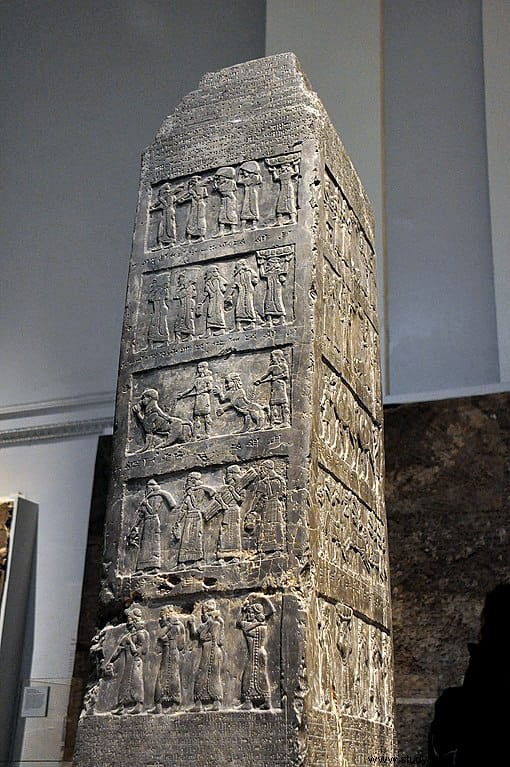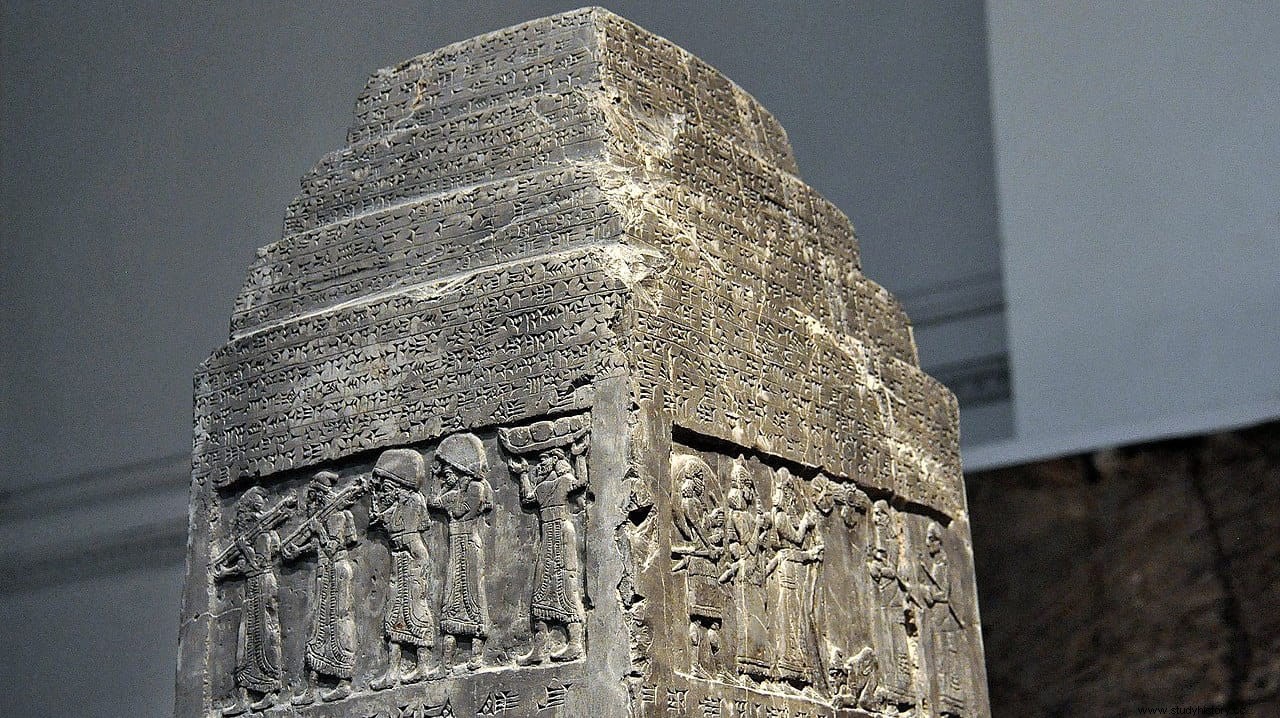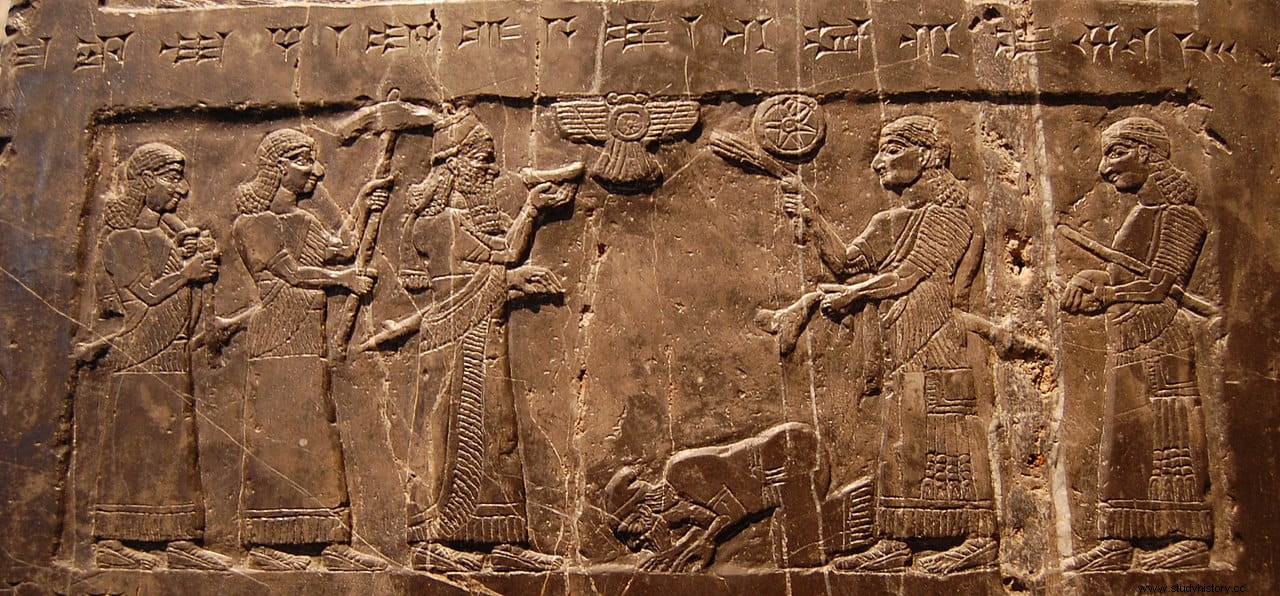In 1846 during the excavations of Nimrud, the ancient Assyrian capital, the archaeologist Austen Henry Layard (who thought that he was actually excavating the city of Nineveh) found a carved pillar with reliefs on all its sides.

The so-called Black Obelisk is a black limestone sculpture with bas-relief scenes and inscriptions commemorating the exploits of King Shalmaneser III, who reigned in Assyria between 858 and 824 BC.
Just a year before his death Shalmaneser had the obelisk placed in the central square of Nimrud, as a public monument. On it are 20 scenes in relief, five on each side, depicting five kings offering tribute and prostrating themselves before him:Sua of Gilzanu, Jehu, the king of Musri, Marduk-apil-usur of Suhi, and Qalparunda of Patin.
Each of the scenes occupies four panels around the pillar and bears a cuneiform inscription explaining them. Above and below the reliefs, another long cuneiform inscription recounts the highlights of the life and military campaigns of the reign of Shalmaneser III.
It is one of the two complete Assyrian obelisks that have been found so far, along with the White Obelisk of Ashurnasirpal I. It is 197.8 centimeters high by 45 wide, and obelisk-shaped with a rectangular base, which tapers in height until crowning in a staggered manner.

The black obelisk is historically important because a biblical character, King Jehu of Israel, is mentioned for the first time in it (although some researchers believe that the mention is, on the contrary, King Joram).
The biblical figure appears in the second register from the top, referred to as Ia-ú-a mar Hu-um-ri-i in the inscription, which states that Jehu brought or sent tribute from him around 841 BC:

But also because it is the first known reference to the Persians (Parsua, in the obelisk inscription).
